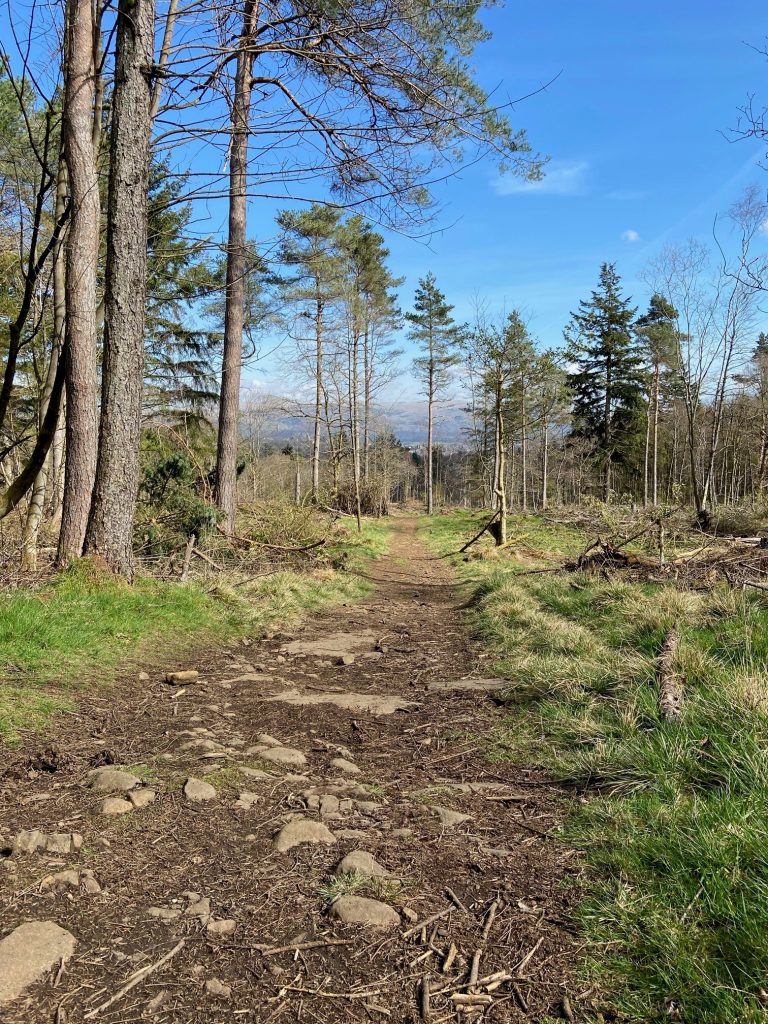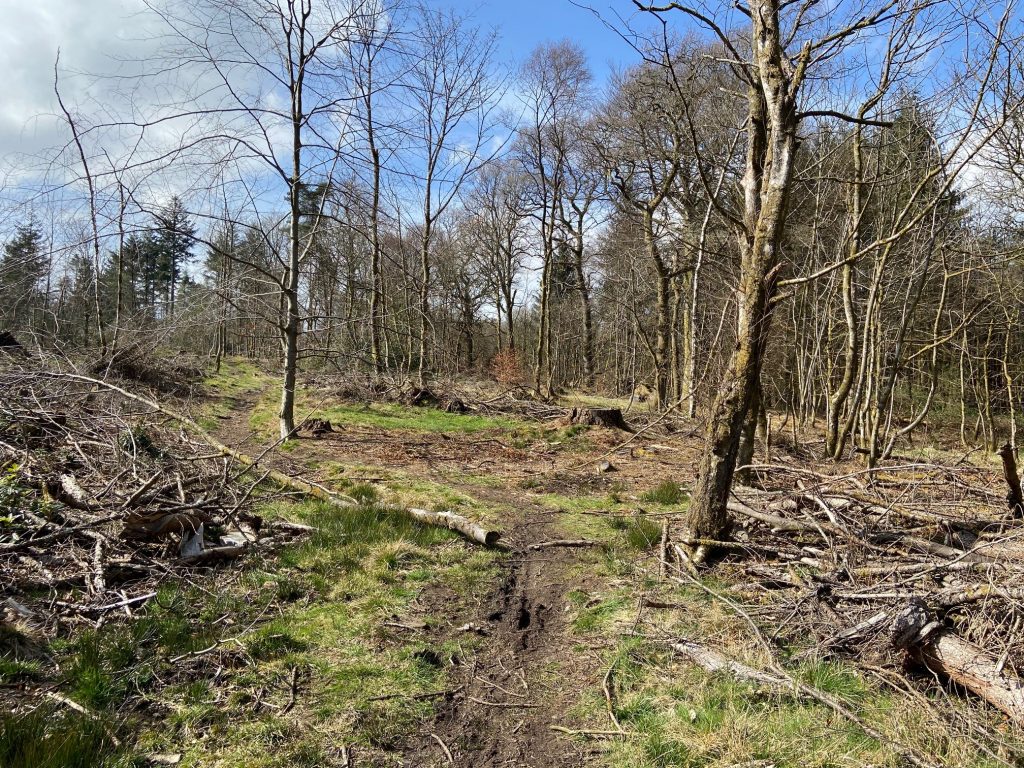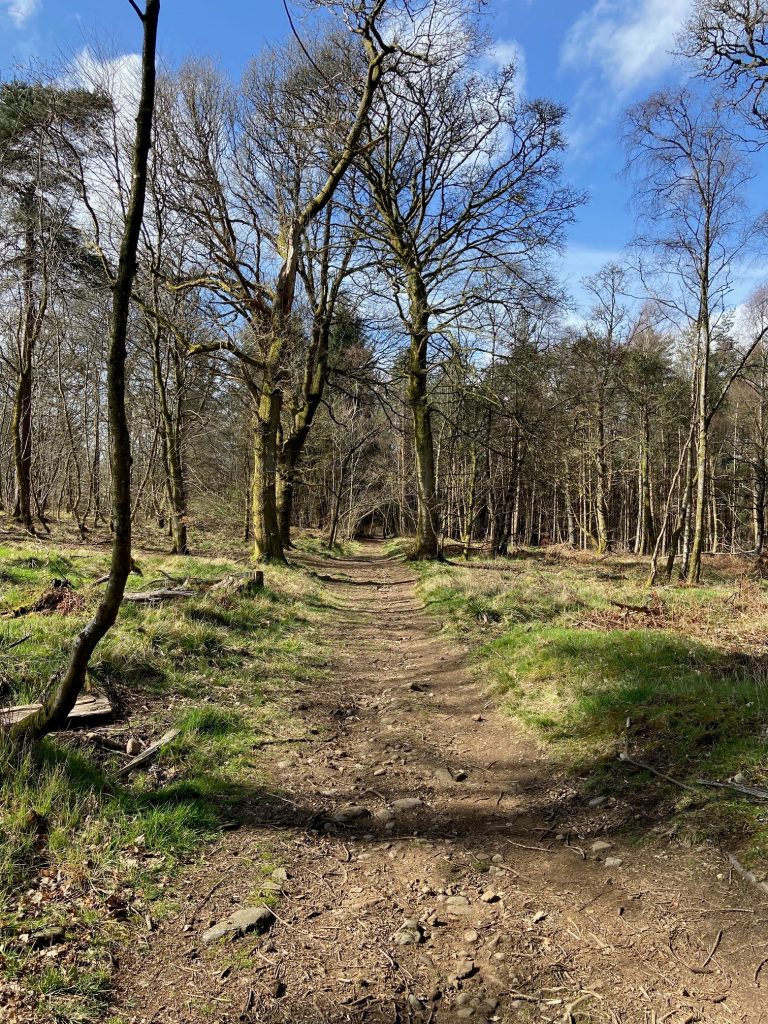Update on planning for the Statutory Plant Health Notice (SPHN) area in the Community Woodland
Over the next few months, we will be planning the future management and restocking of the area of Gillies Hill Community Woodland affected by the SPHN felling works. The felling was required by law due to the discovery of Larch Disease (Phytophthora Ramorum) in the woodland and is now completed.
The Statutory Plant Health Notice document we received can be viewed here: https://ccdt.org.uk/sphn-document-as-issued-by-scottish-forestry/
This link will also take you to some FAQ’s regarding the SPHN larch felling. https://ccdt.org.uk/faqs-about-the-sphn-larch-felling/

The SPHN area is approximately 21 hectares in total, including clear-felled, heavily thinned and lightly thinned areas, with a variety of ground conditions and access.
Our aim in restocking and managing the SPHN area will be to deliver the aims of the woodland management plan, as agreed through community consultation. These are to:
- encourage responsible and safe public access,
- encourage native wildlife and control invasive species,
- ensure economic sustainability by generating income from woodland activities and by making use of appropriate grant aid,
- enhance community engagement and educational use, and
- manage and develop Polmaise Castle gardens and other heritage assets.
The approved woodland management plan can be viewed here: https://ccdt.org.uk/gillies-hill-woodland/woodland-vision/woodland-management/

Planning the restocking process needs careful thought, considering factors (in no particular order) such as:
- Understanding the most suitable tree species for each area of the woodland – With the aim of creating a mixed woodland of mainly native trees to provide a diverse, rich and resilient environment for wildlife and the community.
- Any areas of positive natural regeneration – The increased light on to the woodland floor may promote regeneration of young trees and other native flora and fauna in some areas, with limited intervention required. Regrowth of Rhododendron and bracken may also present challenges.
- Phasing of restocking – Options include starting from a gradual, community-led replanting programme split over a number of planting seasons (Nov-March), to a large-scale (contractor-led) restocking across a single season. Or a combination of both.
- Options for tree protection – During the early years of tree growth, protection is likely to be required to prevent damage from animal grazing/browsing. This could include individual tree guards (plastic, biodegradable or compostable options), areas of fencing, or a combination of both. Tree protection is likely to be a large expense in addition to the planted new trees.
- Costs of restocking and available grant funding – The Trust received an income of c.£60,000 from the sale of felled timber from the SPHN and will use money from this income for restocking/future management. However additional grant funding may be required depending on the options chosen for restocking. Grants require careful consideration however, as they often bring with them specific constraints and requirements which may present challenges in delivering our management objectives.
- Brash clearance – Some areas have heavy brash left from felling and may require a degree of ground clearance to make planting easier. However, deadwood and brash also create habitat for wildlife (particularly during the spring/summer months), so a careful balance is required.
- Designated area for Redwoods/Sequoias – The Scottish Redwood Trust has offered to provide Redwood/Sequoia saplings for planting within the woodland and there is enthusiasm in the community for this. The Trust are keen to facilitate this, and to identify a suitable designated area for planting within the woodland.
- Capacity of volunteers – The Trust is reliant on the time and willingness of its community volunteers. What is realistic to achieve through volunteers is therefore an important consideration.
Community consultation is fundamental and the Trust will be seeking the views of the community and woodland users on how best to deliver our woodland management plan aims, at all the main stages. We hope to do this via a combination of our media/online channels and in-person consultation events.

To help with this planning, CCDT are likely to seek independent, specialist professional advice at an early stage to help us narrow down potential options, costs, grants etc.
We appreciate the SPHN felling was a difficult period for the local community, and we hope to provide as many positive opportunities as possible for the community/woodland users to participate in the restocking and management programme.
If you have any questions on the restocking process, or would like to get involved in planning, please email woodland@ccdt.org.uk

